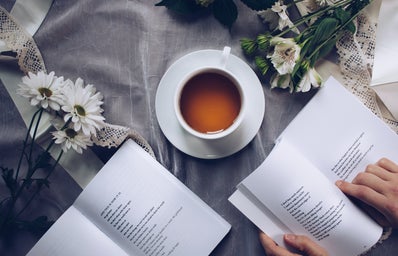Charlotte Brontë’s Jane Eyre is one of my favorite books ever—and I’ve read a lot of books. It is one of the few novels that I consider to be a perfect 10/10. Everything in this book is so incredibly well thought out and well executed that it boggles the mind to even consider how someone could have created such a work of art. There are infinite layers of meaning to the text. Each time you read it, you discover some new facet of its greatness; some small, overlooked detail, a remark or description that you originally thought nothing of, leading you to formulate an entirely different interpretation of the text. Although you can read this book through almost any lens, the main subjects of literary analysis of Jane Eyre are the topics of gender, social class, and colonialism, which I plan to explore in the body of this article.
Author Bio
Before I dive into my description of the book, I want to take a brief moment to give a very basic outline of Charlotte Brontë’s life:
Brontë was born on April 21, 1816, in Thornton, United Kingdom—the third of Patrick Brontë and Maria Branwell’s six children and the eldest of the three famous Brontë sisters: Charlotte, Emily, and Anne. She attended the Clergy Daughters School at Cowan Bridge in Lancashire—which would become the writer’s inspiration for the harsh Lowood Academy, the charity school Jane Eyre attends from ages ten to eighteen. Charlotte, unlike her protagonist, did not stay at the school long. Brontë’s father and aunt, who moved in with the family after Maria Branwell passed away, removed her from the school following the death of the two eldest Brontë children, who fell ill as a result of the school’s poor conditions. Brontë’s guardians then took the children’s education into their own hands, their aunt providing the sisters with household skills and their father giving them an unconventional, creativity-focused education that developed their imagination and story-telling capabilities.
At the age of fourteen, Charlotte enrolled in another school—Roe Head—again for only a brief stint of time, returning home to teach her sisters everything she had learned and to focus on her passion for creating art. In 1835, Brontë began her first job as an educator, teaching at her former school, Roe Head, before taking up the position of private governess—a position she loathed. In 1846, the three sisters published a volume of poetry together, taking up the pseudonyms Currer, Ellis, and Acton Bell to avoid gender-based bias, and began developing their first novels. Brontë published Jane Eyre on October 19, 1847, inspiring both praise and bewilderment for, what were at the time, radical views. In 1854, Brontë married Arthur Bell Nicholls, her father’s curate, and died soon thereafter on March 31, 1855, as a result of the physical toll pregnancy took on her body (Alexander).
Charlotte Brontë, over the course of her entire life, wrote four books: Jane Eyre, The Professor, Shirley, and Villette, her most well-known being Jane Eyre, a novel that has resonated with thousands and has been a major focus of literary discussion since its publication.
The Book
At its most basic level, Jane Eyre is the story of the coming-of-age of an orphan girl named Jane Eyre, a lowly, poor girl who must navigate a life in which she has always been an outsider struggling to find a home and a sense of self. Beyond that, it is a harsh critique of gender expectations and social hierarchy as well as a commentary on colonialism, all of which are impossible to understand without context.
Gender Roles
The doctrine of separate spheres defined gender expectations during the Victorian era, prescribing which domain of life each gender would preside over as well as which attributes were considered desirable for each sex to possess. Women were believed to be morally superior but physically inferior and were confined to the private sphere, charged with household and familial duties. Men, conversely, were thought to be physically superior but morally inferior and were assigned to the public sphere, which included labor, politics, and public discourse (Hughes).
One of Brontë’s primary goals in writing Jane Eyre was to highlight the constricting, repressive demands forced upon women during the Victorian era as well as to disprove the idea that women are inherently timid and passive. Throughout the novel, as Jane progresses through life, she is met with men, as well as women who have been brainwashed into believing society’s definition of what a woman is true, who repeatedly attempt to subjugate her and force her into a mold of what they think she should be. She first rebuffs such efforts to constrain her, but eventually, worn down from constant criticism, she capitulates to society’s demands and subdues her inner fire and passion, putting on a facade of meekness to fit into her preconceived role.
Brontë uses Jane’s transformation from an unreserved girl to a demure woman to represent the thousands of Victorian women who were forced to suppress all of the characteristics that made them themselves, to shrink into an expectation that was considered to be a one-size-fits-all for an entire gender. The author argues that women were not made solely to complete household duties nor are all women the same. Instead, she asserts that women are intelligent and bold, that they, like men, have the capacity and the ambition for greatness and are not content with living a life limited to serving others.
“Women are supposed to be very calm generally: but women feel just as men feel; they need exercise for their faculties and a field for their efforts as much as their brothers do; they suffer from too rigid a restraint, too absolute a stagnation, precisely as men would suffer; and it is narrow-minded in their more privileged fellow-creatures to say that they ought to confine themselves to making puddings and knitting stockings, to playing on the piano and embroidering bags”
Charlotte Brontë
Social Class
Social class in Victorian England, although less strict compared to other countries in 19th-century Europe, was well-defined. Class dictated how one was expected to behave as well as how one related to people who belonged to different classes, limiting opportunities to attain a higher social position (Steinbach). Women in particular felt this constraint, as most women, outside of the working-class, did not work and were, therefore, dependent upon the fortunes of their family or husband, rendering them practically unable to alter their station. Furthermore, because the size of a woman’s dowry determined who would marry her, she would most likely, end up marrying a man that belonged to her same class.
Charlotte Brontë uses Jane Eyre’s position as first a lowly dependent living off of the generosity of her extended family, the Reeds, and later her position as a governess, an occupation which belongs to no one social class, to critique the strict class system of Victorian England. She highlights how people, during this time, forced onto others rigid definitions of what they could or could not be or do according to their social class, a factor one had little control over, confining them to a set of unspoken rules that dictated their actions. Furthermore, the author draws attention to the unkind nature of the upper class, demonstrating how the wealthy treated those belonging to a lower class as almost a different, lesser species.
“Station! Station!—your station is in my heart, and on the necks of those who would insult you, now or hereafter”
Charlotte Brontë
Colonialism
The British Empire occupied a vast amount of land during the Victorian era, growing dramatically so that, at the end of the 19th century, the empire controlled nearly one-quarter of the globe’s land. With this rapid expansion came an increased flow of goods and people to and from Britain and its colonies, connecting the island with its wide-reaching acquisitions and solidifying its control over them (Steinbach).
When I first read Jane Eyre and heard that it was popularly interpreted through the lens of colonialism, I was shocked because, upon just one read, I had absolutely no idea how anyone could possibly link anything in this novel to the subject of colonialist attitudes. However, after reading Susan Meyer’s “Colonialism and the Figurative Strategy of Jane Eyre,” perhaps the most famous literary criticism of Jane Eyre and its colonialist undertones, the merit of this discussion became rapidly apparent. Meyer, in her analysis, explores Brontë’s use of race as a metaphor in her novel, detailing how the author uses oppressed races to illuminate the struggles of both women and England’s lower middle class, linking these three groups through a shared struggle against those who seek to control and subjugate them. Furthermore, the critic calls attention to Brontë’s anxieties regarding British expansion, which are, perhaps without even the author’s knowledge, reflected in her writing.
Other Topics of Analysis
In this article, I only explored the three main topics of literary discussion when it comes to Jane Eyre, but there are many more ways in which you can read the text, including through the lens of religion, the struggle between love and independence, and the dangers of having low self-worth, to name a few.
Fun Fact
The phrase “plain Jane” comes from Jane Eyre, who, throughout the novel, laments her wholly unremarkable appearance, and her want of any noteworthy features.
Literature Hot Take
Not that it’s a competition, but I think the Brontë sisters’ books are better than Jane Austen’s. The Brontës’ protagonists are so realistic and relatable; they speak to those deep, ugly truths that torment us and that we attempt to hide away. They unashamedly expose that raw human need for acceptance and longing, for love in an unforgiving and cruel world, and the difficulty of striking that precarious balance between being in a relationship, whether it be romantic, familial, or platonic, and not permitting your identity to be subsumed by the other person. Don’t get me wrong, I enjoy Jane Austen’s protagonists too—I love Emma Woodhouse and her meddlesome, at times clueless (see what I did there?) nature and Elizabeth Bennet’s intelligent, witty humor, but I love the pure imperfection and volatility of the Brontë’s characters, their unrefined, potent anger, and love.
Further Reading
If you have not yet read Jane Eyre, I would recommend purchasing the Norton Critical Edition of Jane Eyre; the volume contains literary criticisms, including Susan Meyer’s “Colonialism and the Figurative Strategy of Jane Eyre,” as well as letters Charlotte Brontë wrote. If you already have a copy of Jane Eyre, I recommend reading Sandra M. Gilbert and Susan Gubar’s “A Dialogue of Self and Soul: Plain Jane’s Progress,” Susan Meyer’s “Colonialism and the Figurative Strategy of Jane Eyre,” and John Hagan’s “Enemies of Freedom in Jane Eyre,” which can be found on JSTOR.
Links
Plain Jane’s Progress on JSTOR
Colonialism and the Figurative Strategy of “Jane Eyre” on JSTOR


